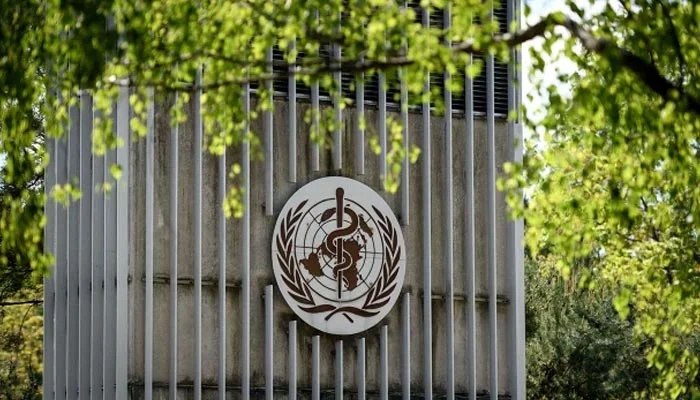Lower back pain cases could rise to 843m by 2050: WHO
ISLAMABAD: In 2020, approximately 1 in 13 people, equating to 619 million people, experienced Low Back Pain (LBP), a 60pc increase from 1990, the World Health Organization (WHO) Friday said, warning that cases of LBP could rise to an estimated 843 million by 2050, with the greatest growth anticipated in Africa and Asia, where populations are getting larger and people are living longer.
The World Health Organization (WHO) is releasing its first-ever guidelines on managing chronic low back pain (LBP) in primary and community care settings, listing interventions for health workers. Low back pain is the leading cause of disability globally.
The personal and community impacts and costs associated with LBP are particularly high. Chronic primary LBP refers to pain that lasts for more than three months without an underlying disease or other condition. For these reasons, WHO is issuing guidelines on chronic primary LBP. Dr Bruce Aylward, WHO Assistant Director-General, Universal Health Coverage, Life Course said “To achieve universal health coverage, the issue of low back pain cannot be ignored, as it is the leading cause of disability globally.” “Countries can address this ubiquitous but often-overlooked challenge by incorporating key, achievable interventions, as they strengthen their approaches to primary health care.”
With the guidelines, WHO recommends non-surgical interventions and includes education programmes that support knowledge and self-care strategies; exercise programmes; some physical therapies, such as spinal manipulative therapy and massage; psychological therapies, such as cognitive behavioural therapy; and medicines, such as non-steroidal anti-inflammatory medicines.
They outline key principles of care for chronic primary LBP, recommending holistic, person-centred, equitable, non-stigmatizing and coordinated. Care should be tailored to address the mix of factors (physical, psychological, and social) that may influence their chronic primary LBP experience. A slew of interventions may be needed to holistically address a person’s chronic primary LBP, instead of single interventions used in isolation.
They also outlined 14 interventions that are not recommended for most people in most contexts because their potential harms outweigh the benefits. WHO advised against interventions such as lumbar braces, belts and/or supports; traction (i.e. pulling on part of the body); and some medicines including opioid painkillers, which can be associated with overdose and dependence.
LBP is a common condition experienced by most people at some point in their life. In 2020, LBP accounted for 8.1pc of all-cause years lived with disability globally.
“Addressing chronic low back pain requires an integrated, person-centred approach. This means considering each person’s unique situation and the factors that might influence their pain experience,” said Dr Anshu Banerjee, WHO Director for Maternal, Newborn, Child, Adolescent Health and Ageing. “We are using this guideline as a tool to support a holistic approach to chronic low back pain care and to improve the quality, safety and availability of care.”
LBP affects life quality and is associated with comorbidities and higher mortality risks. Individuals experiencing chronic LBP, especially older persons, are more likely to experience poverty, prematurely exit the workforce, and accumulate less wealth for retirement. At the same time, older people are more likely to experience adverse events from interventions, reinforcing the importance of tailoring care to the needs of each person. Addressing chronic LBP among older populations can facilitate healthy ageing, so older persons have the functional ability to maintain their well-being.
-
 Jelly Roll Reveals How Weight Loss Changed Him As A Dad: 'Whole Different Human'
Jelly Roll Reveals How Weight Loss Changed Him As A Dad: 'Whole Different Human' -
 Prince Harry Gets Emotional During Trial: Here's Why
Prince Harry Gets Emotional During Trial: Here's Why -
 Queen Camilla Supports Charity's Work On Cancer With Latest Visit
Queen Camilla Supports Charity's Work On Cancer With Latest Visit -
 Dove Cameron Opens Up About Her Latest Gig Alongside Avan Jogia
Dove Cameron Opens Up About Her Latest Gig Alongside Avan Jogia -
 Petition Against Blake Lively PGA Letter Gains Traction After Texts With Taylor Swift Revealed
Petition Against Blake Lively PGA Letter Gains Traction After Texts With Taylor Swift Revealed -
 Netflix Revises Warner Bros. Deal To $83 Billion: All-cash Offer
Netflix Revises Warner Bros. Deal To $83 Billion: All-cash Offer -
 Prince Harry Mentions Ex-girlfriend Chelsy Davy In UK Court
Prince Harry Mentions Ex-girlfriend Chelsy Davy In UK Court -
 David, Victoria Beckham 'quietly' Consulting Advisers After Brooklyn Remarks: 'Weighing Every Move'
David, Victoria Beckham 'quietly' Consulting Advisers After Brooklyn Remarks: 'Weighing Every Move' -
 Meta's New AI Team Delivered First Key Models
Meta's New AI Team Delivered First Key Models -
 Prince Harry Defends Friends In London Court
Prince Harry Defends Friends In London Court -
 AI May Replace Researchers Before Engineers Or Sales
AI May Replace Researchers Before Engineers Or Sales -
 Christina Haack Goes On Romantic Getaway: See With Whom
Christina Haack Goes On Romantic Getaway: See With Whom -
 Consumers Spend More On AI And Utility Apps Than Mobile Games: Report
Consumers Spend More On AI And Utility Apps Than Mobile Games: Report -
 Aircraft Tragedy: Missing Tourist Helicopter Found Near Japan Volcano Crater
Aircraft Tragedy: Missing Tourist Helicopter Found Near Japan Volcano Crater -
 Taylor Swift Lands In Trouble After Blake Lively Texts Unsealed
Taylor Swift Lands In Trouble After Blake Lively Texts Unsealed -
 'Prince Harry Sees A Lot Of Himself In Brooklyn Beckham'
'Prince Harry Sees A Lot Of Himself In Brooklyn Beckham'




